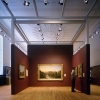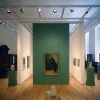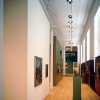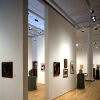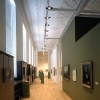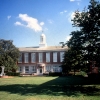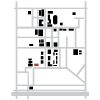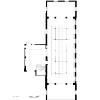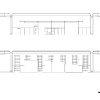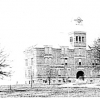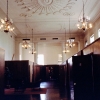Clark Atlanta University Art Galleries
Project Description
The history of the realization of Clark Atlanta University Art Galleries and its collection is long and distinguished, a history of marginality only now being revealed and lauded. Inaugurated by Hale Woodruff, professor and artist, annual exhibitions were held from 1942-1970, providing African-American artists a forum in which to display their works. Close to nine hundred African-Americans from all over the country participated and the present collection includes paintings, prints and sculptures of some one hundred and fifty-five of these artists. Each year the annual exhibition was awaited with great anticipation by African-American artists nationwide and the Atlanta arts community alike. For the artists, the Annuals established aesthetic criteria and inclusion of one’s work qualified the artist as “having made it” or “having arrived.” Purchase prizes were awarded in various categories and Clark Atlanta University gradually came into possession of the largest collection of art by African-Americans spanning the years 1942-1970. The Galleries are the much needed, long awaited home of the collection which has too long languished in inaccessible, dark corridors of storage.
The initial experience of the Clark Atlanta University Art Galleries are that of the Trevor Arnett Building, an elegant, restrained building designed in 1931 by the New York architect James Gamble Rogers, and simply noted on his drawings as the Library Building, Atlanta University. Located on the second level, the gallery occupies the space of the original reading room. Introductory to the reading room or gallery proper, is the mural foyer or atrium, a beautifully proportioned vertical space housing six canvas panels painted in 1952 by Hale Woodruff. The murals, “Art of the Negro”‘ considered outstanding in the American art tradition, depict African tribal art forms that impacted Western Art. Bathed in soft light from the skylight ceiling, the colors of the murals fairly dance in the space.
The reading room is the grand moment of the building, a space of elegant proportions, pleasant light and modest but important decoration. The gallery is new life for the reading room. It is an insertion which celebrates simultaneously the collection and the room. The painted steel mega-trellis operates as a focusing device persuading the eye to appreciate anew the pleasures of the room while introducing this substantial and unique collection.
Modest materials include paint on gypsum board and plaster, and veneer plywood at walls; oiled hardwood and vinyl composition tile at floors; painted steel trellis structure; paint on plaster at ceilings; restored / refurbished plaster and hardwood details. Gypsum board walls, supported by the mega-trellis and more vertical than necessary, compliment the height of the space. Flexibility is achieved by the re-location, addition or subtraction of walls within the grid of the supporting trellis.
